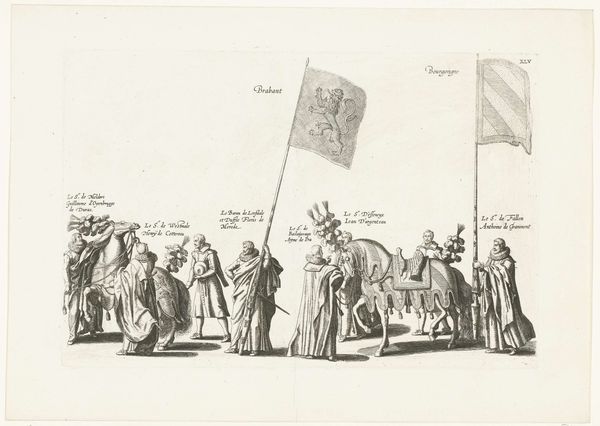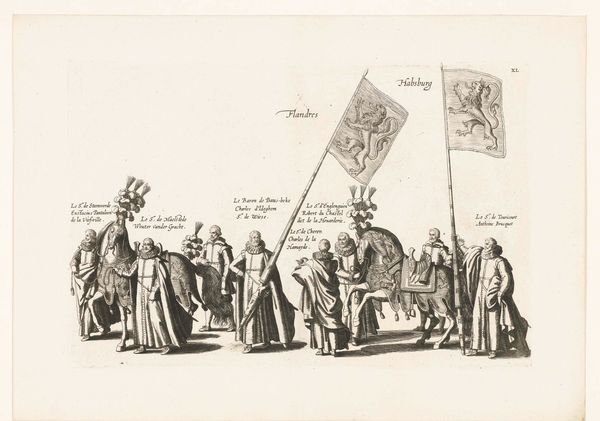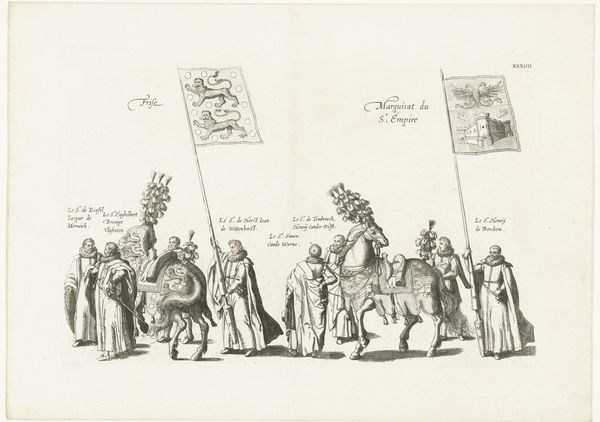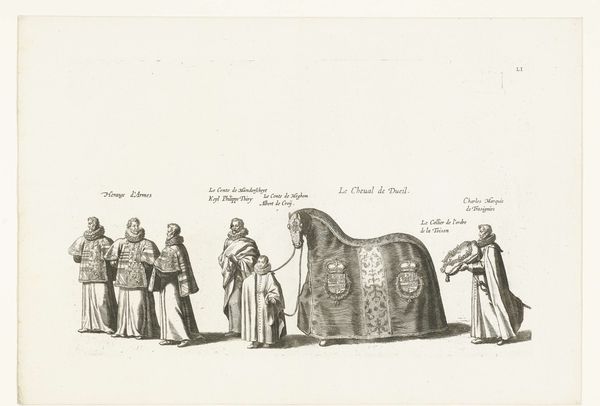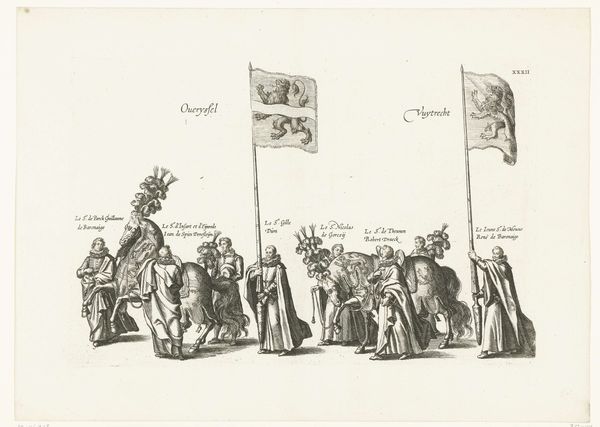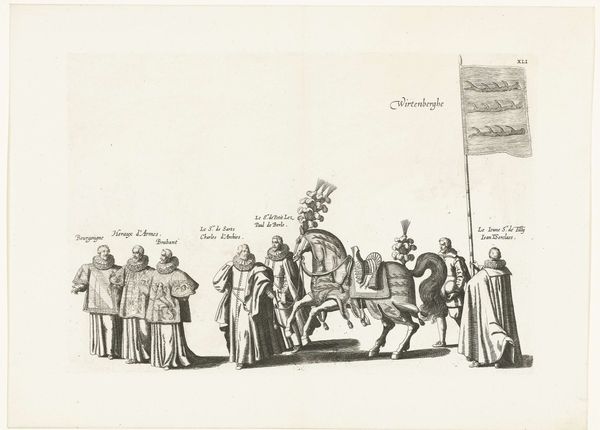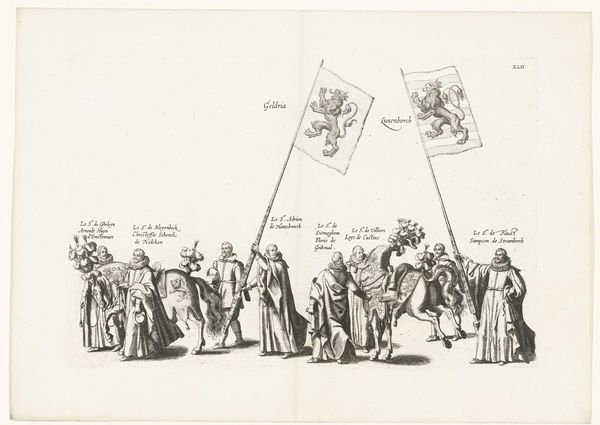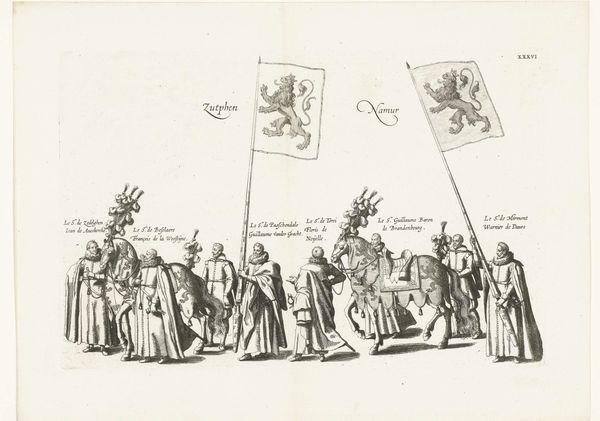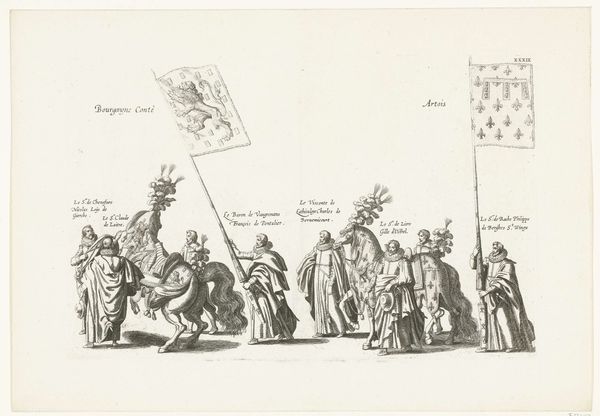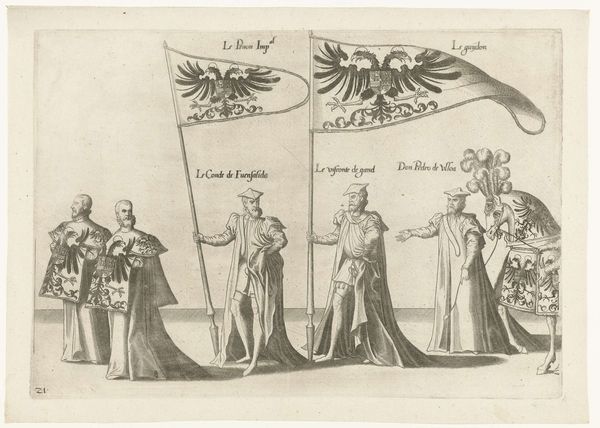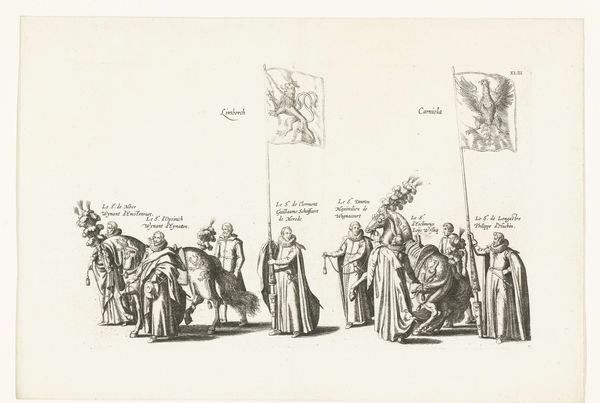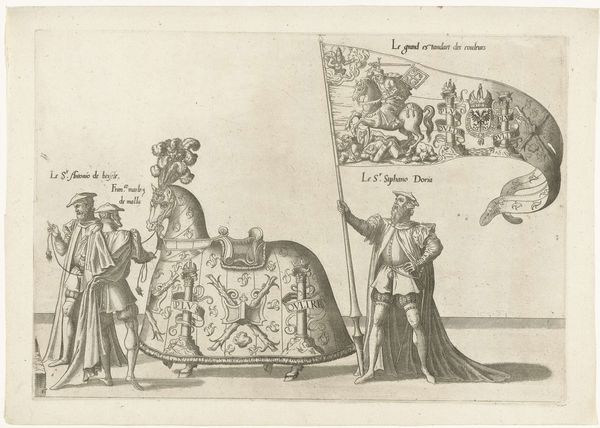
print, engraving
#
baroque
# print
#
figuration
#
line
#
history-painting
#
academic-art
#
engraving
Dimensions: height 248 mm, width 378 mm
Copyright: Rijks Museum: Open Domain
Curator: Right, let's look at this striking engraving, "Begrafenisstoet van aartshertog Albrecht (plaat XXXI)", or "Funeral Procession of Archduke Albert, plate XXXI" by Cornelis Galle I. Created around 1623, it offers a snapshot into a very specific moment in history. What's your initial reaction to it? Editor: Stark. Severe. Like a historical record stripped bare, but the flags...they feel like glimpses of something else. There is an appealing and dramatic use of line throughout. The absence of color is actually quite powerful. Curator: Exactly! The medium, an engraving, really lends itself to that austere feel. Galle meticulously captures every detail, focusing on the solemn procession following Archduke Albert's death. It's interesting to think about what printmaking, the means of reproducible images, meant at this moment for conveying images to a broader audience. The procession isn't just an event; it becomes a potent symbol. Editor: And those flags! Each carries a unique charge. Look at the one held high on the left featuring what appears to be the Virgin and Child, illuminated, juxtaposed against the darker symbols beside it. I can see a strong, possibly deliberate, use of the diagonal created by their staffs to divide the image into unequal but weighted parts, one heavenly, one earthly. The procession is literally being led from two very different powers and perspectives. Curator: The flags become symbolic representations of power, faith, and legacy, right? But to get a little more granular, it’s thought that this particular print, plate XXXI from a series, shows just a fragment of a much longer ceremonial parade. They underscore the layers of meaning. Every element – the attire, the symbols, the very act of documentation itself, performs that duty of immortalizing the subject, so the parade becomes a mobile monument. It goes beyond memory. Editor: So, it becomes more than a historical document, and that use of semiotic codes and visual relationships opens possibilities for other conceptual insights. As a formalist I find myself more drawn to that kind of potential meaning embedded in the surface. A striking work. Curator: I concur! A fitting visual monument indeed. It prompts you to reflect on the very act of commemoration, I would argue. Editor: Agreed!
Comments
No comments
Be the first to comment and join the conversation on the ultimate creative platform.

